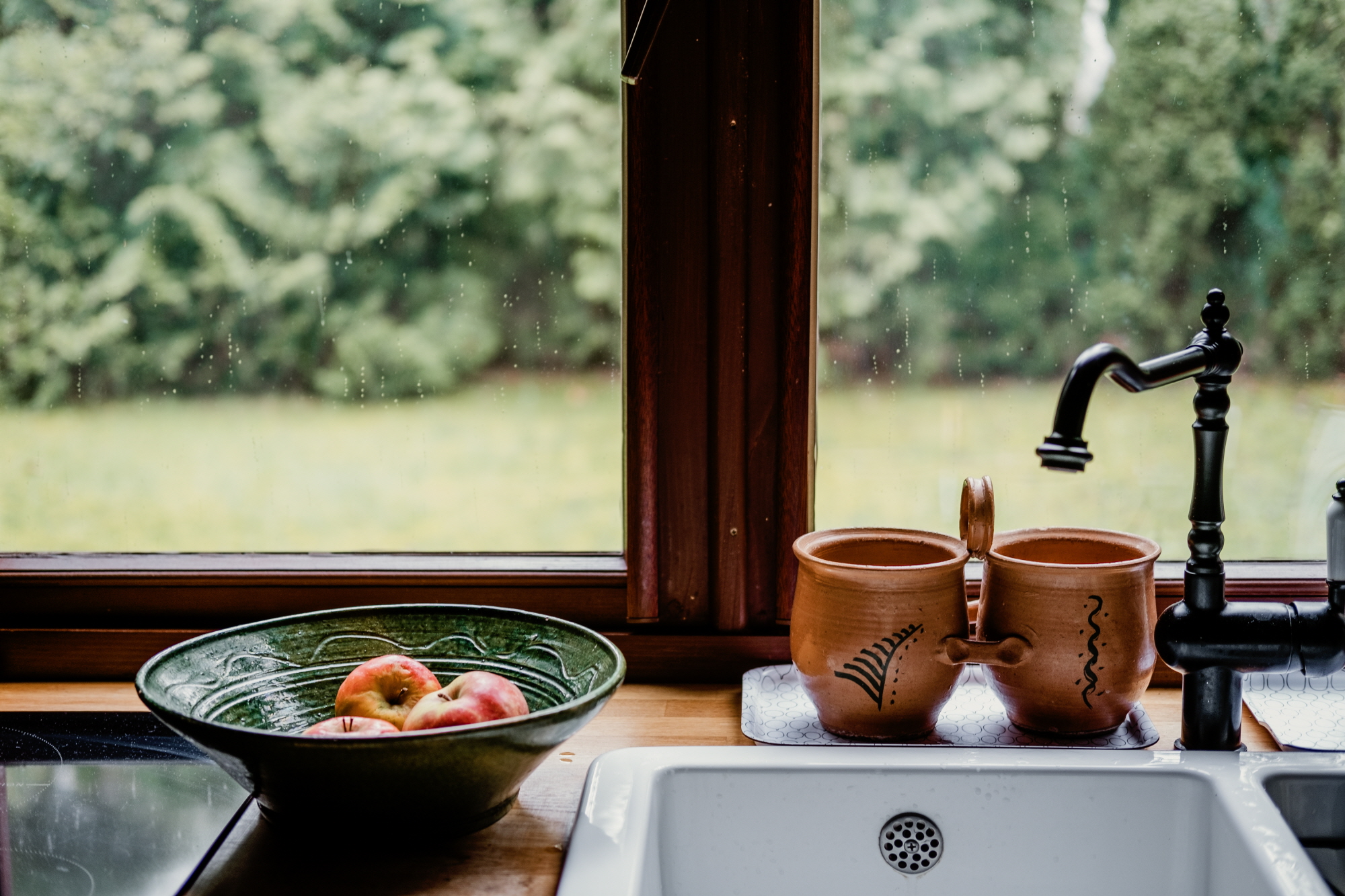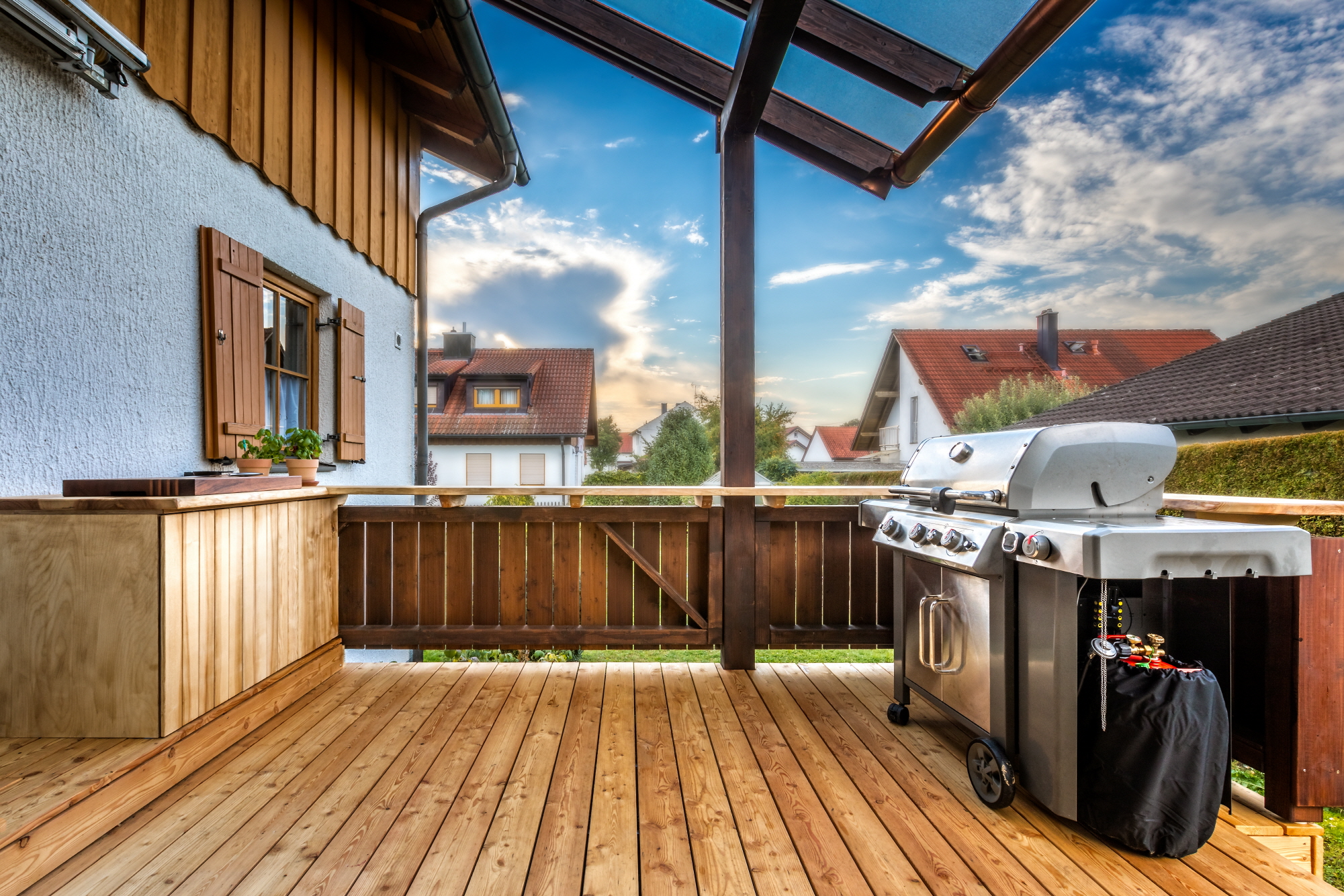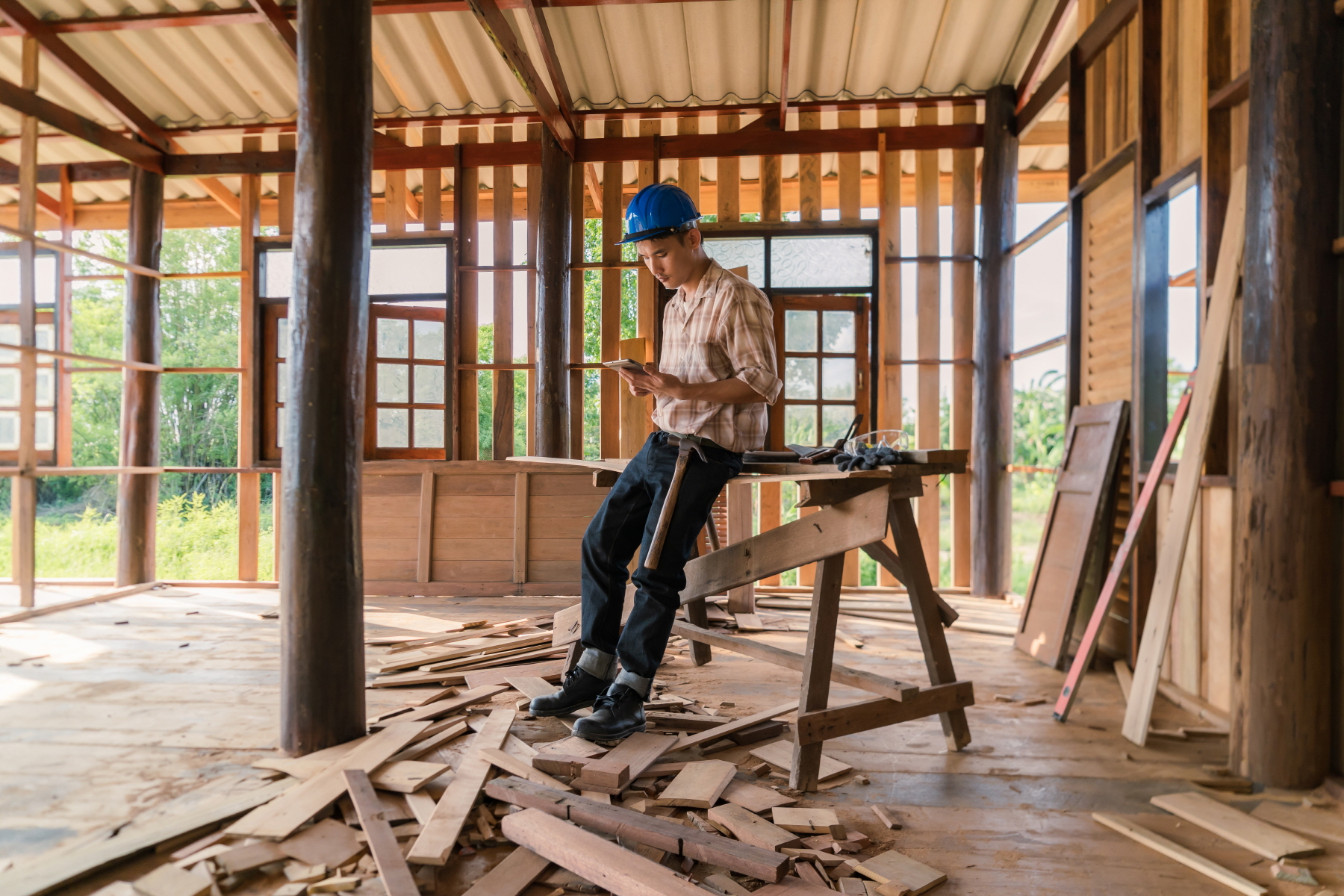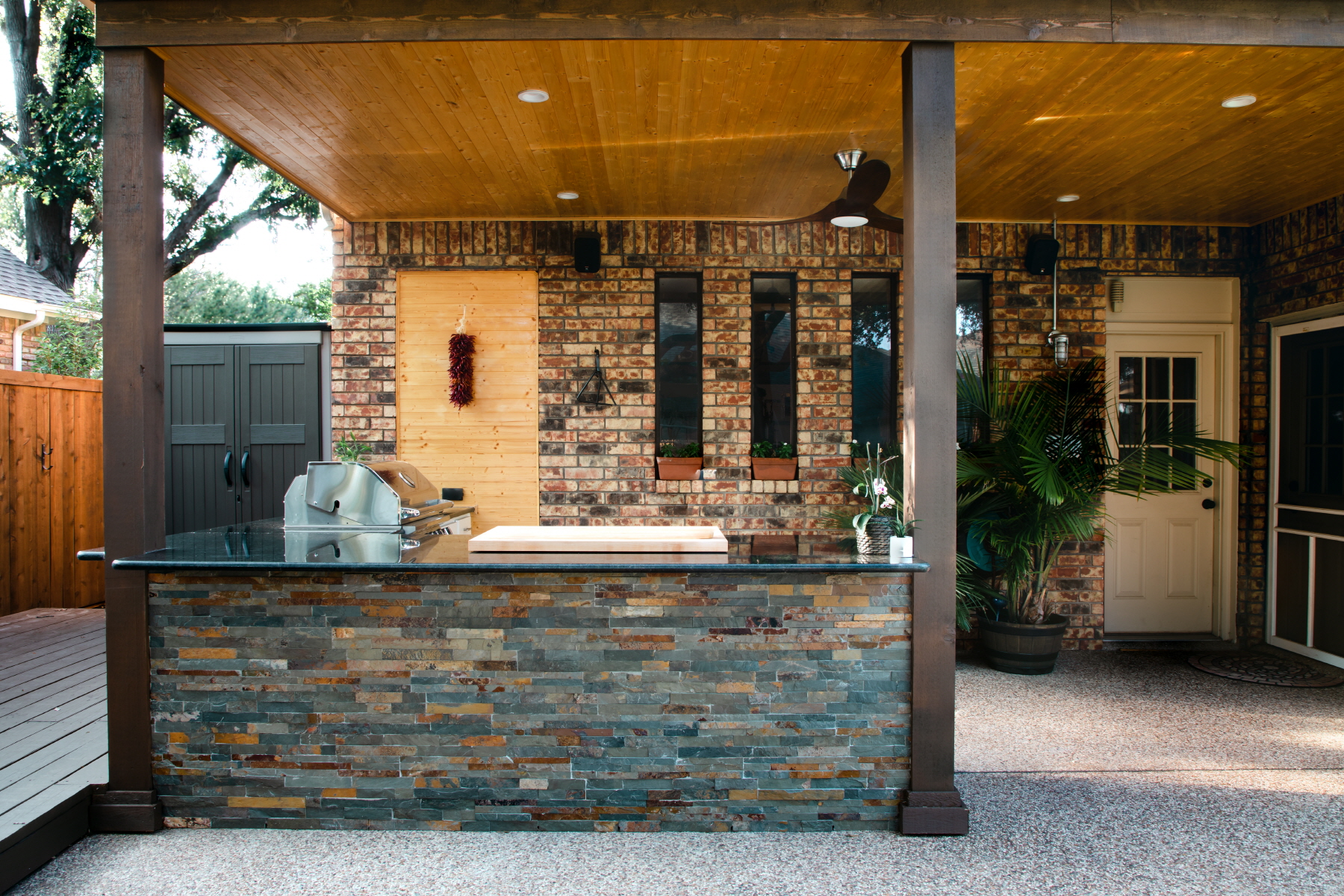What Is An Outdoor Kitchen Frame?
A strong, safe, and durable kitchen frame is crucial for the success of any outdoor kitchen. It serves as the foundation to support your outdoor cooking appliances such as a grill or pizza oven, as well as any worktops or dining areas you may require. Kitchen frames are usually constructed with materials like wood, steel, concrete blocks, or bricks. Once the frame is in place, it can be finished with cement board and adorned with an exterior material like tile.
When choosing a frame material, there are several factors to consider, including your local environment, budget, timeline, and maintenance requirements. It’s also important to establish your kitchen layout goals, intended use, and necessary utility access to effectively plan your project. In this comprehensive guide, we will delve into the step-by-step process of creating your outdoor kitchen from the ground up, allowing you to transform your backyard into a dream culinary space.

What To Consider For An Outdoor Kitchen Frame
When it comes to your outdoor kitchen frame, there are several important factors to consider. Thoroughly planning out the space for your project, selecting the appropriate materials, and determining the location of your utility access are all key elements to take into account. Let’s explore each of these factors in detail.
Space Planning
The first step in ensuring the success of your outdoor kitchen project is thorough planning. Consider the design and layout of your kitchen by asking yourself the following questions:
What are my goals for the kitchen? Determine how you intend to use your outdoor kitchen. Whether it’s for food preparation, entertaining guests, or enjoying family activities like pizza making, understanding your goals will guide the design process.
How will my existing space influence my kitchen design? Take into account the available space in your backyard. Consider any limitations or constraints, such as limited square footage or the need to integrate the kitchen into an existing deck or patio. Additionally, consider how the orientation of your outdoor kitchen can complement and enhance other features in your backyard, such as gardens or swimming pools.
What kitchen layout suits my needs? Once you have defined your goals and considered space limitations, you can determine the most suitable layout for your outdoor kitchen. Explore different options, such as linear, L-shaped, or U-shaped designs, and consider how to maximize functionality, for example, by strategically placing a food preparation counter next to the grill. Look for inspiration from existing outdoor kitchen designs to help inform your own.
Lastly, plan the foundation for your kitchen frame. It is essential that your kitchen sits on a flat and stable surface. Depending on the materials used, such as concrete blocks, bricks, or steel, you may need to create a custom concrete subfloor to provide adequate support for the weight of your kitchen setup. Measure the footprint of your foundation and ensure it will accommodate your desired kitchen layout before beginning construction.
Material Selection
After planning your outdoor kitchen, the next step is to select materials for your kitchen frame. With a wide variety of materials available on the market, each offering unique benefits and drawbacks, you’ll need to make decisions about:
Durability: When installing heavy appliances such as grills or ovens, it is crucial to choose a material like steel, concrete, or brick that can support significant weight and provide the necessary structural integrity. Additionally, if you reside in an area prone to regular earthquakes or tornadoes, opting for steel or concrete blocks over wood would be more suitable for your outdoor kitchen frame.

Maintenance requirements: Consider that different materials have varying maintenance needs over time. Wooden frames, for example, will require regular washing and resealing to prevent rotting and insect damage. Concrete blocks and bricks, on the other hand, are low maintenance and tend to withstand environmental factors and aging well. Steel frames may require replacement in the future due to the potential for rust.
Weather resistance: Take into account the climate in which you live, particularly if it experiences extreme temperatures, heavy rainfall, or high moisture levels. Certain environments, such as coastal areas, can cause additional damage to building materials. For instance, steel frames are prone to rust and corrosion when exposed to salt and humidity, while wood frames can rot and sag when exposed to water. If long-term weather resistance is a priority, choosing concrete blocks or bricks for your kitchen project is advisable.
Aesthetic appeal: Consider the desired finish for your outdoor kitchen. If you appreciate the look of exposed brick, a brick and mortar frame could be a beautiful addition. Additionally, if you prefer the appearance of natural stones, tiles, or veneers, you have the option of adding these finishes onto a concrete, wood, or steel frame.
Cost: Keep in mind that your choice of framing materials will have a direct impact on your budget. While wood is generally more affordable, it is more prone to damage and potential fire hazards, leading to additional costs in the long run. Conversely, steel may have a higher upfront cost but offers clear benefits in terms of durability and its lightweight construction.

Utility Access
Effective utility planning is a crucial aspect of creating a functional outdoor kitchen. Depending on the appliances you intend to incorporate, access to water, gas, and electricity directly integrated into the frame is essential to avoid costly modifications down the line. It’s recommended to enlist the assistance of a professional to lay these utility lines and connect them to your outdoor kitchen for convenient access. However, if your outdoor kitchen is situated on an existing deck or patio, this process may become more complex.
If installing new utility lines is not feasible, there are alternative options to consider. For instance, you can use propane tanks or charcoal for your outdoor grill instead of connecting it to a natural gas line. Additionally, you can opt for a drop-in ice cooler in lieu of a built-in refrigerator to keep drinks cold. It’s important to note, though, that certain features, such as a working sink, cannot be installed without access to a water line and drain line.
Framing Your Outdoor Kitchen
To create a successful outdoor kitchen, constructing a frame that is safe, secure, and suitable for your local environment is essential. This section provides an overview of the advantages and disadvantages of wood, steel, concrete block, and brick frames. Our aim is to help you determine which material is the best fit for your kitchen project.
Wood Frames
Wooden frames are a popular choice among DIYers due to their affordability. With basic carpentry skills, constructing a frame from wood is a straightforward task, eliminating the need for hiring external contractors. The customizability of wood is another advantage, as it can be easily cut to match the specific dimensions of your desired kitchen layout.
However, it’s important to consider the drawbacks of wood, particularly when it comes to long-term maintenance. Wood is not as strong as materials like steel or concrete, making it susceptible to issues such as rotting, sagging, and shrinkage over time. Additionally, wood is prone to damage from insects, including carpenter ants and termites.
The most significant risk associated with wood is its combustibility. Unlike other structural materials, wood has no inherent fire resistance, increasing the likelihood of it catching fire. To mitigate this risk, it’s necessary to install an insulated jacket beneath hot appliances like grills or pizza ovens. Selecting pressure-treated wood and using a cement backer board on the interior and exterior of the structure can further enhance fire protection. It’s important to note that while the initial cost of wood may be lower compared to alternatives, the additional products required to maintain fire resistance can raise the overall project budget significantly.
If you decide to proceed with a wooden frame, it’s advisable to opt for hardwood species like ipe and teak. These types of wood are more resistant to rot and offer improved long-term durability against the elements. Species such as cedar and redwood also have natural resistance to pests. Regularly sealing the wooden frame with an all-weather varnish every 2-3 years can help prolong its lifespan.

Steel Frames
Steel frames are a well-established and reliable choice for constructing a sturdy outdoor kitchen frame. The advantages of a metal frame are clear: it is a lighter building material, making it beneficial for constructing a kitchen on an existing patio or deck. Additionally, steel frames offer exceptional structural integrity, allowing for the addition of heavy appliances without the risk of sagging or collapse. The design of a steel frame also provides ample space beneath the kitchen countertop for maintenance of cooking appliances and utility lines, as well as extra storage.
Two common types of steel used in construction are stainless steel and galvanized steel. Galvanized steel is iron steel dipped in molten zinc, providing additional resistance to rust and corrosion. On the other hand, stainless steel, with added chromium and nickel, offers superior corrosion resistance and strength compared to galvanized steel.
Despite these benefits, steel frames have some drawbacks. A significant consideration is their susceptibility to damage from environmental factors, especially in hot, humid, and wet climates. Coastal areas with salt and water, tropical regions with high humidity, heavy rainfall in the Pacific Northwest, and sulfur dioxide pollution in major cities can all contribute to rust and corrosion in steel frames over time. Even galvanized steel and stainless steel, although more robust due to their manufacturing processes, are still susceptible to wear and damage from natural elements.
It’s important to note that constructing a steel frame for an outdoor kitchen requires additional steps in the finishing process. Cement boards need to be applied before adding decorative materials or finishes, which is crucial for ensuring the structural integrity and aesthetic appeal of the kitchen but can potentially extend the project timeline.
Concrete Blocks
Concrete blocks, also known as cinder blocks, offer an excellent option for outdoor kitchen frames. They can be easily purchased at home improvement stores and are typically more cost-effective. Concrete is a strong and durable material, ensuring that it can support the weight of your appliances and countertops. Moreover, concrete blocks are highly resistant to climate impacts, making them a suitable choice for humid, hot, or wet conditions without compromising structural integrity.
Installation of concrete blocks is relatively easy and fast. The blocks can be stacked and adhered together quickly. Unlike other materials, there is no need to apply a cement board for finishing and decoration on the outside. You can directly add cladding material or visually appealing finishes like tile, stone, or masonry to the concrete blocks, achieving the desired look.
However, it’s important to consider a few disadvantages of concrete blocks. One significant drawback is their weight. Concrete is one of the heaviest building materials available, requiring the assistance of contractors to pour a concrete slab or footing into the ground for support. This may pose a challenge if you are trying to install the frame on an existing structure, such as a deck or patio.
Another disadvantage of concrete blocks is their bulkiness. They take up more space compared to steel or wooden frames, resulting in limited access for maintenance and reduced storage space underneath the kitchen counter.
Brick Masonry
Brick masonry has a longstanding reputation for its strength and durability in home construction. Whether made of clay, sand and lime, or concrete, bricks offer a stable base that can withstand significant weight and extreme weather conditions.
The structural advantages of using brick for your outdoor kitchen project are numerous. Bricks are resistant to environmental factors such as humidity, salt, water, and pollutants. They can also withstand freezing and thawing, making them a popular choice in Northern climates. Unlike steel, which is prone to corrosion, brick does not require regular replacement. Additionally, brick is highly heat-resistant, ensuring safety when using hot appliances and open flames for cooking.
Brick also adds a visually appealing element to any project. By simply constructing your kitchen frame with brick, you can achieve a finished look without the need for additional facing or decorative materials. Whether you choose warm, red bricks to evoke Southern charm or opt for multi-colored bricks for a beautiful mosaic effect, brick offers versatility and saves both time and money.
However, it’s important to consider the drawbacks of using brick. Like concrete blocks, brick is a heavy material, meaning a custom concrete slab will need to be constructed for your outdoor kitchen. This prevents the kitchen from being installed on an existing deck or patio area. Additionally, bricklaying is a specialized skill, requiring the expertise of a professional brick mason to ensure the structural soundness of your kitchen frame.
